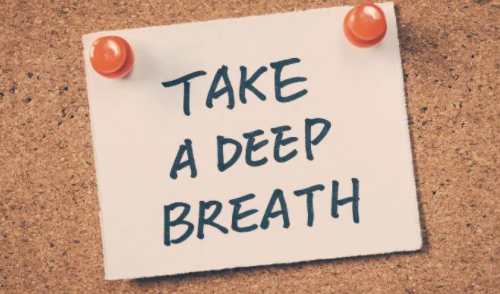“Of the more than 40,000 chemicals used in consumer products in the US, according to the EPA, less than 1% have been rigorously tested for human safety. ”
We spend so much time trying to get healthy. We buy ONLY organic produce, try to drink plenty of water, squeeze in some form of exercise whenever possible, and maybe even make a little time for self care if we’re lucky. However, then, whoops, we slather parabens on our skin and spray our counters with toxic 2-Butoxyethanol (yeah that’s poison). We are exposed to so many chemicals (approximately 129 different noxious forms of matter DAILY) which can disrupt our precious hormonal balance and derail all the hard work we do in our health regimens. So, no matter how clean we eat, we can still bump up against weight resistance, brain fog and energy loss, among other things. We can’t totally avoid toxins (they’re everywhere!), but we can reduce our exposure one Lysol brand cleaner at a time. I know replacing your household products can seem like too daunting a task, but one at a time can make all the difference and there are great resources that can ease the burden drastically.
First things first. Let’s start with the reason why this is important. Basically, synthetic chemicals are in nearly everything we touch and consume. But some chemicals can be potentially harmful and a number of experts are anxious about possible long-term health effects of our everyday exposure. Of the more than 40,000 chemicals used in consumer products in the US, according to the EPA, less than 1% have been rigorously tested for human safety. Further, an EWG study found 200+ toxic chemicals in the cord blood of newborns.
We’re exposed to toxic chemicals routinely in our households — from the phthalates in synthetic fragrances to the fumes in oven cleaners. Ingredients in common household products have been linked to asthma, cancer, reproductive disorders, hormone disruption and neurotoxicity, to name a few. Further, chronic exposure adds to the body’s “toxic burden” — the number of chemicals stored in its tissues at a given time. I’m sure you have noticed a significant increase in allergies, asthma, chronic illness, autism, food allergies and many other health concerns that are causing serious health problems for ourselves, our friends and our loved ones. I’m not saying that chemicals are all to blame, but they are certainly a part of the problem.
While it is impossible to avoid them all, its good to have be aware of five main groups of synthetic chemicals: pesticides, phthalates, flame retardants, bisphenol (BPA) and PFAS. You can’t completely eliminate exposure because some of them are in environments we can’t control (like subways etc.), but we can reduce our exposure.
Pesticides - any chemical substance used to regulate, prevent or destroy plants or pests – usually insects, rodents or micro-organisms such as fungi and bacteria. Residues are in up to 70% of produce sold in the US, according to the latest annual analysis of US Department of Agriculture (USDA) data.
What to Do: Peel produce and trim the fat from meat and fish (where pesticides might collect); wash and scrub fruits and vegetables under running water. Buy organic where you can. But don’t avoid fresh foods if you can’t buy organic. Eat different kinds of produce to avoid potentially high exposure to a single pesticide.Phthalates - Phthalates are a group of chemicals most commonly used to make plastic more flexible and harder to break. They also act as a binding agent or a solvent. They are in cosmetics and personal care products (think shampoo, perfume, nail polish, hairspray, tampons and more), wallpaper, shower curtains, lubricating oils and detergents, to name a few.
What To do: Try to avoid plastic food containers . Use glass instead and never reheat food in plastic. Check product labels – avoid anything with “fragrance” or phthalates listed (you’d be surprised).Flame Retardants - chemicals that have been used to stop the spread of fire in a wide range of common household items and other products. They can be found in furniture foams, carpets, curtains and other textiles, paints, food packaging, home insulation, appliances, toys, electronics (laptops, televisions, phones, cables, wires and circuit boards), car seats and other automotive parts, and many baby products.
What to do: Try to keep dust levels down by wet-mopping, vacuuming with a HEPA filter and keeping HVAC systems clean. Wash your hands before eating since hand-to-mouth contact can lead to flame retardant exposure. Try to avoid buying furniture and baby products filled with polyurethane foam.Bisphenol (BPA) - Bisphenols are a group of chemicals used to manufacture plastics, epoxy resins and other products. They are in receipt paper, food and beverage can liners, food packaging, DVDs and CDs, medical equipment, toys and automotive parts, water bottles and some dental sealants.
What to Do: Minimize canned food or, if you can’t, rinse the food in water (some cans are now BPA free). Don’t microwave food in plastic containers or cans. Use non-plastic containers when possible for food and drinks. Choose BPA-free water and baby bottles.PFAS —a group of approximately 5k synthetic chemicals that have been in commercial production to make surfaces resist stains, water and grease. Used for decades to make Teflon non-stick– and PFOS, used to make Scotchgard water repellent. PFAS chemicals can be in non-stick cookware, fire retardants, stain and water repellents, furniture, waterproof clothes, pizza boxes and take-out containers, food packaging, carpets and textiles, rubbers and plastics, electronics and some dental floss.
What to Do: Avoid non-stick cookware, Gore-Tex fabric and clothing made with Scotchguard, and personal care products containing PTFE . When in doubt, ask manufacturers if their products contain PFAS since they may not be labeled. Ask your local health department if your water is contaminated above EPA-specified levels, and use a filter if so.
There are PLENTY of other chemicals where these came from that could be acting as hormone disrupting disasters for our bodies. But starting with the “Big 5” can really go a long way in lessening the toxic burden. Again, I know this might seem overwhelming, but start with JUST ONE swap. There are outstanding resources you can use to get ideas for swaps you might be willing to make and also websites that help you gauge the levels of toxicity in your products. My favorite resources are:
Irina Webb - She does ALL of the hard work digging deep into the science and going as far as to reach out to companies for further questioning when she doesn’t know the source of the ingredient in a product. Her website is neatly arranged by category so you can find what you need. One drawback is she has so much information for each category it can be too much.
Plateful Health - Dr. Vivian Chen. shares a science-based way to detox that leverages the body's natural weapons against toxins. Her insta account is a MUST follow (@plateful.health)
EWG - the health advocacy group Environmental Working Group. Their website will score every one of your products based on the toxic level of ingredients and give you an idea of how they match up to others in the same category.
In scouring all of these resources and doing a bit of exploring myself, I have curated a list of my faves that might be a useful start for you as well. I have tried them all but fair disclosure, I haven’t completely replaced all of my old products. Here’s looking at you, hair dye and plumping lip gloss! Its an ongoing and constantly evolving process like anything else but my perfume will have to be pried from my cold, dead hands…
Branch Basics - their Oxy Boost and concentrate are plant and mineral based without any harmful fragrances, preservatives or GMOs.
Force of Nature Disinfectant - turns Salt, Water & Vinegar Into An All-purpose Cleaner & Deodorizer that is as effective as bleach but not as harsh
Grow Air Freshener - fragrance made with plants
Molly’s Suds - People swear by this stuff (I prefer Branch Basics’ Oxy Boost)
Osea Beauty - Women owned, environmentally friendly, organic…
Dime Beauty - the Hyper Glow is one of my faves
Alitura Naturals - the Gold Serum is life-changing
Aleavia Body Wash - amazing, but not overpowering scent, and great probiotic ingredients
Neal’s Yard - love the hand washes that don’t dry out my hands
Evolvh Haircare - leave-in conditioner that actually works! I use it on my daughter
Rise Well Toothpaste - hydroxyapatite instead of fluoride which is what your enamel is made of (kid approved!)
Field Company - Cast Iron Pans
Xtrema Cookware - Made from 100% pure ceramic, all-natural, non-toxic and nonreactive
Pick one. Swap out the old. Notice very little difference in the product’s cleaning/cooking/washing performance. In fact, you may appreciate these products more, knowing they do the job without doing “a job” on your health. Repeat and switch out another product when ready. Please let me know your favorites and what you think if you try any of the above. Happy Cleaning!


















